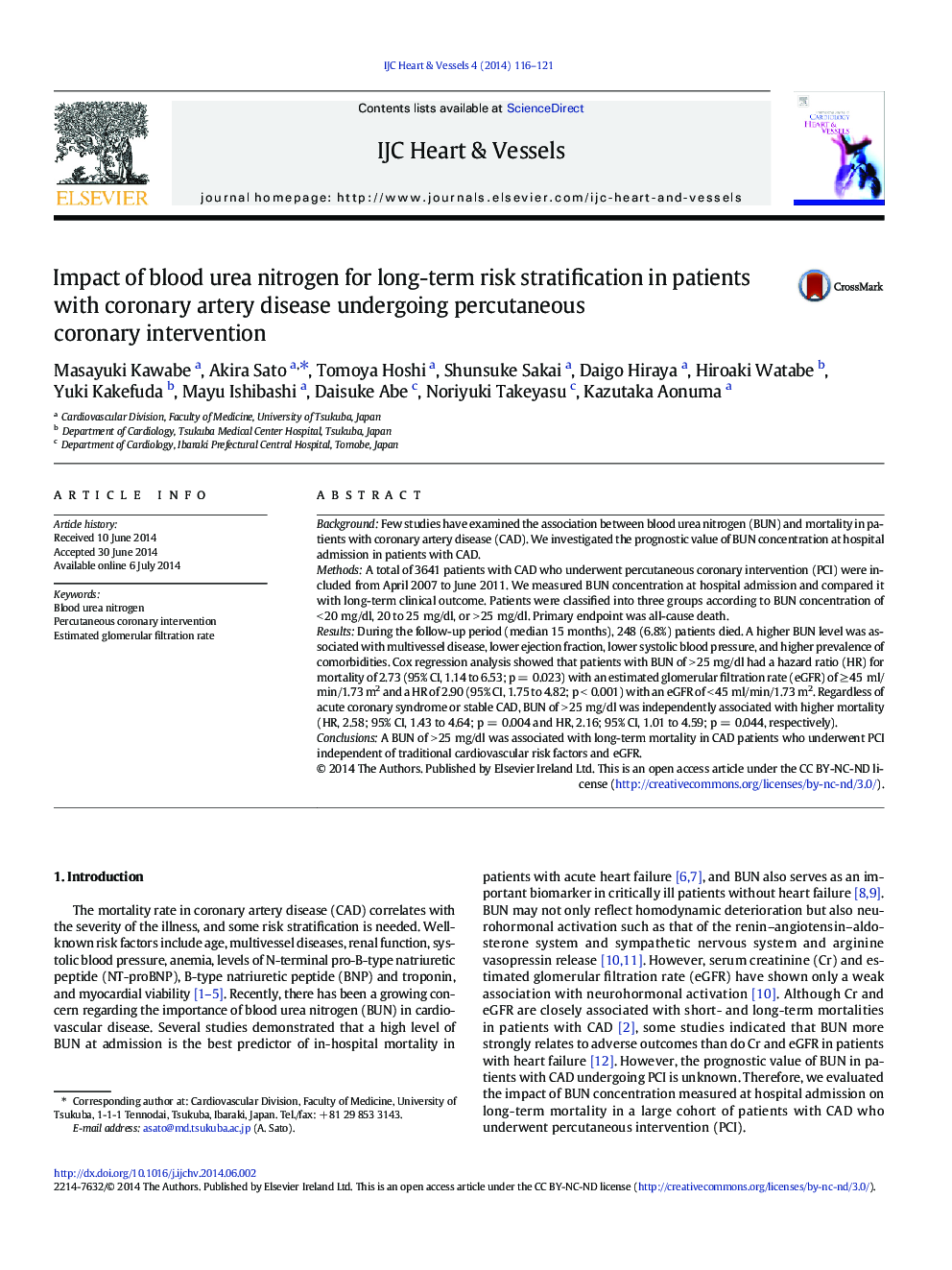| Article ID | Journal | Published Year | Pages | File Type |
|---|---|---|---|---|
| 2927104 | IJC Heart & Vessels | 2014 | 6 Pages |
BackgroundFew studies have examined the association between blood urea nitrogen (BUN) and mortality in patients with coronary artery disease (CAD). We investigated the prognostic value of BUN concentration at hospital admission in patients with CAD.MethodsA total of 3641 patients with CAD who underwent percutaneous coronary intervention (PCI) were included from April 2007 to June 2011. We measured BUN concentration at hospital admission and compared it with long-term clinical outcome. Patients were classified into three groups according to BUN concentration of < 20 mg/dl, 20 to 25 mg/dl, or > 25 mg/dl. Primary endpoint was all-cause death.ResultsDuring the follow-up period (median 15 months), 248 (6.8%) patients died. A higher BUN level was associated with multivessel disease, lower ejection fraction, lower systolic blood pressure, and higher prevalence of comorbidities. Cox regression analysis showed that patients with BUN of > 25 mg/dl had a hazard ratio (HR) for mortality of 2.73 (95% CI, 1.14 to 6.53; p = 0.023) with an estimated glomerular filtration rate (eGFR) of ≥ 45 ml/min/1.73 m2 and a HR of 2.90 (95% CI, 1.75 to 4.82; p < 0.001) with an eGFR of < 45 ml/min/1.73 m2. Regardless of acute coronary syndrome or stable CAD, BUN of > 25 mg/dl was independently associated with higher mortality (HR, 2.58; 95% CI, 1.43 to 4.64; p = 0.004 and HR, 2.16; 95% CI, 1.01 to 4.59; p = 0.044, respectively).ConclusionsA BUN of > 25 mg/dl was associated with long-term mortality in CAD patients who underwent PCI independent of traditional cardiovascular risk factors and eGFR.
